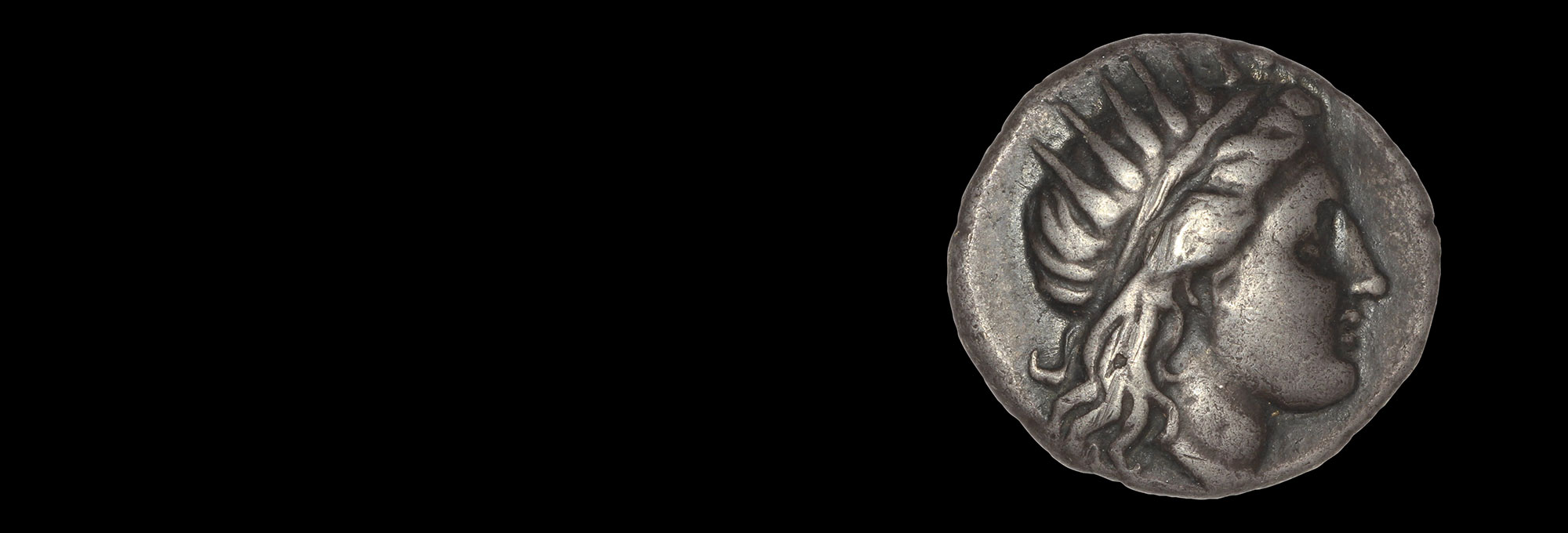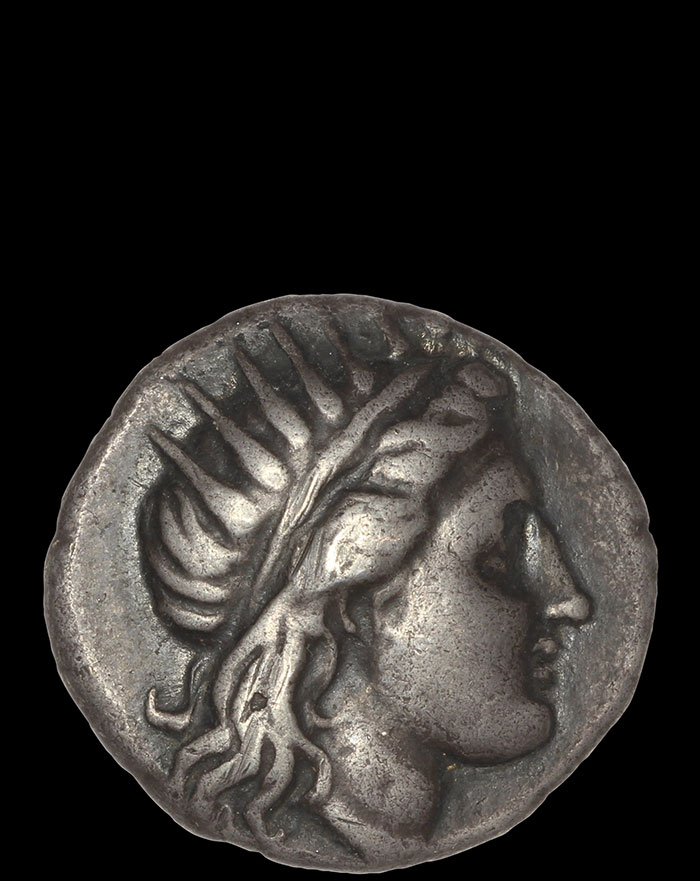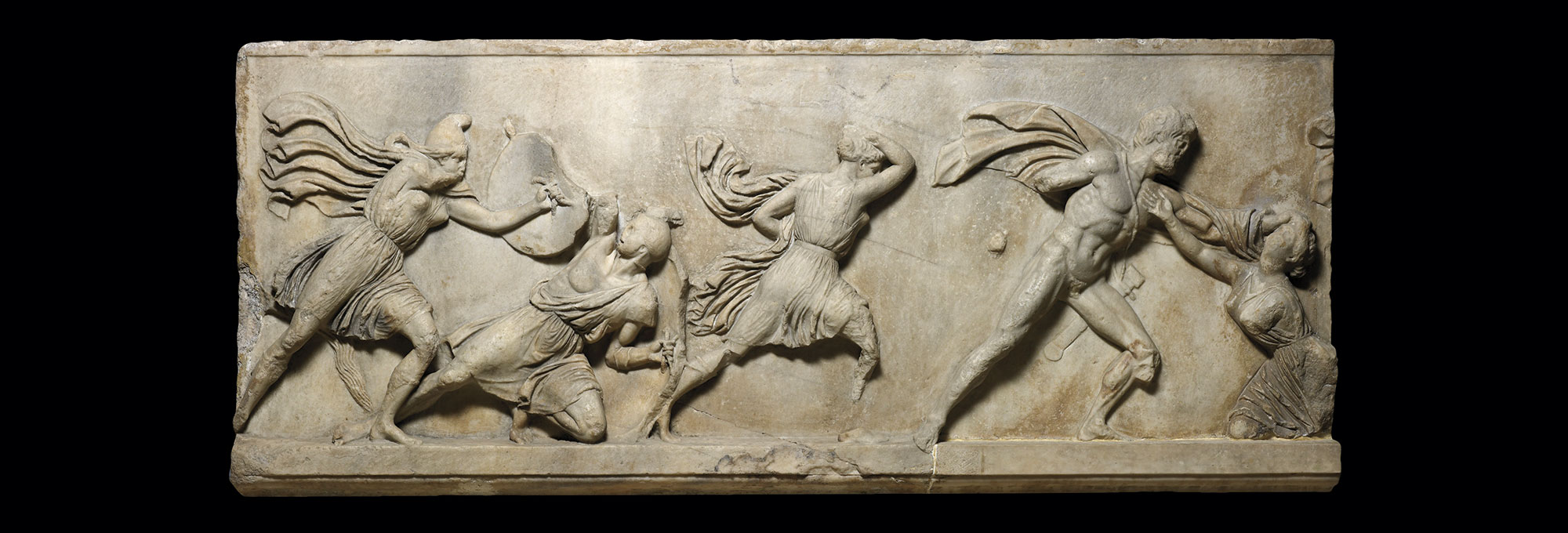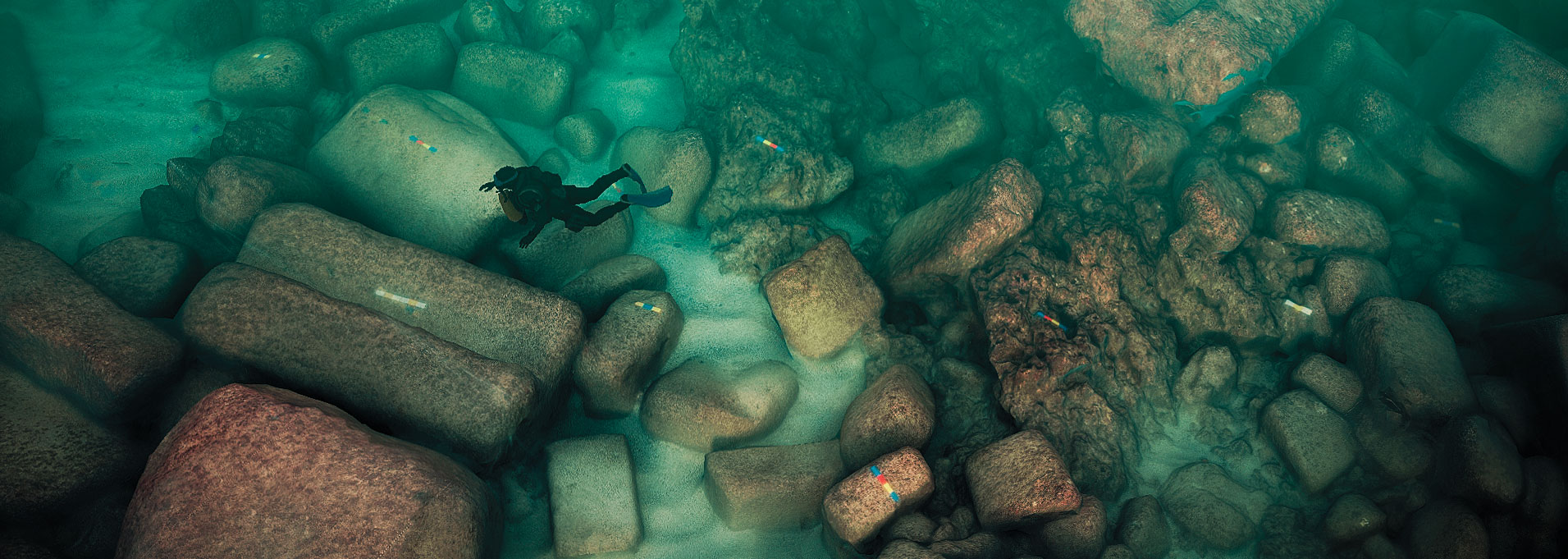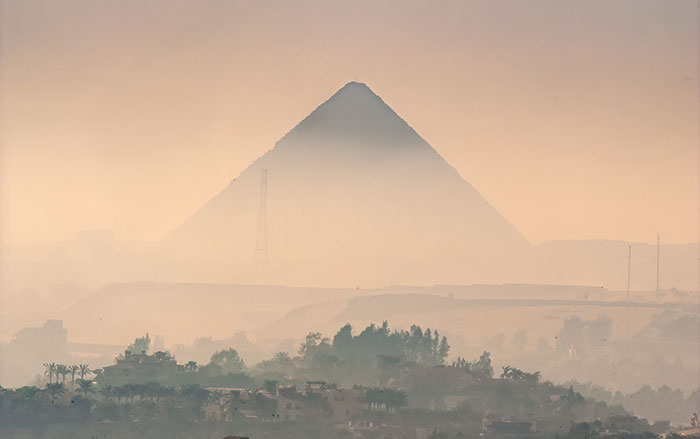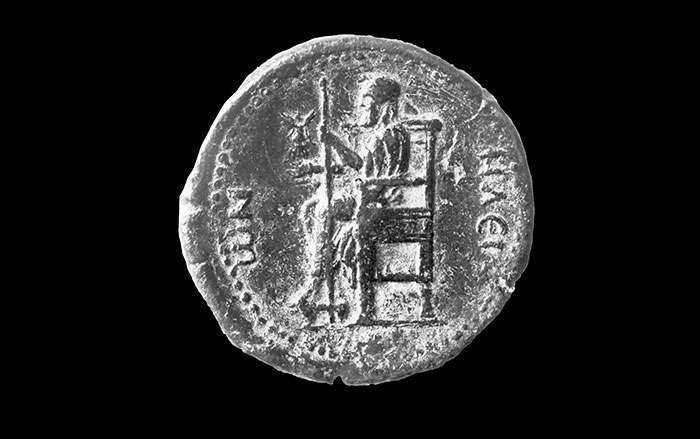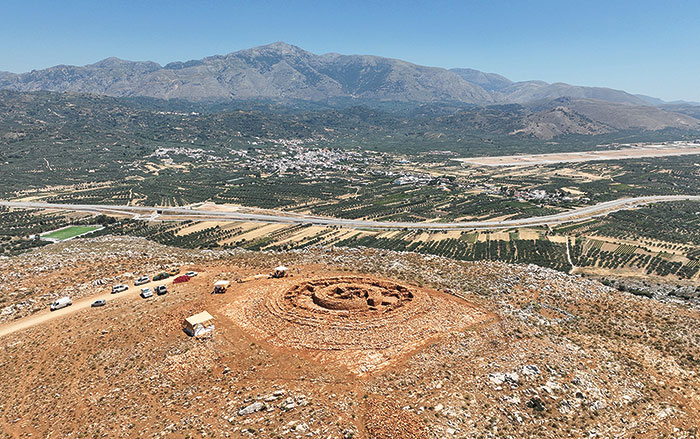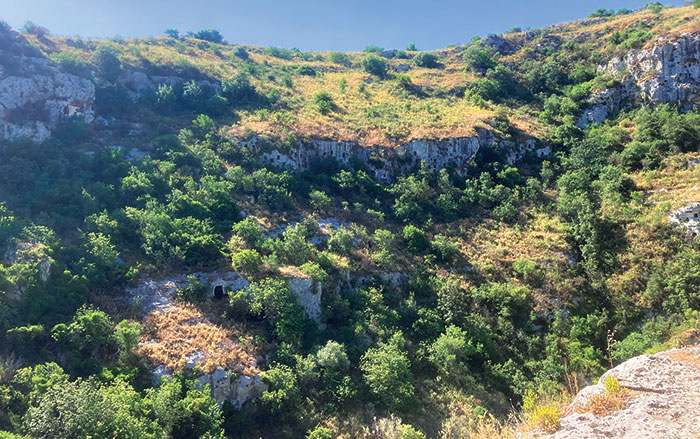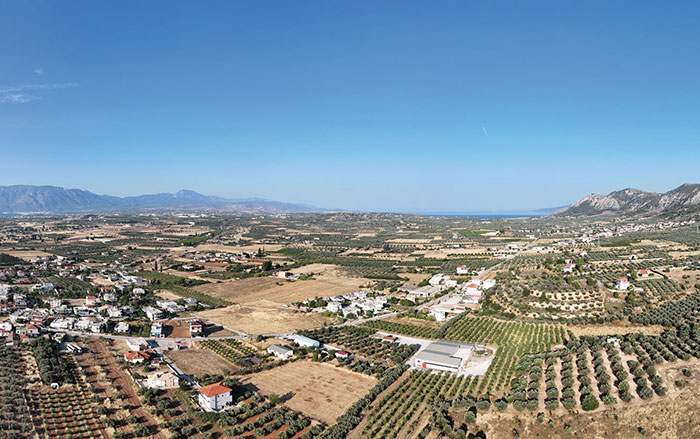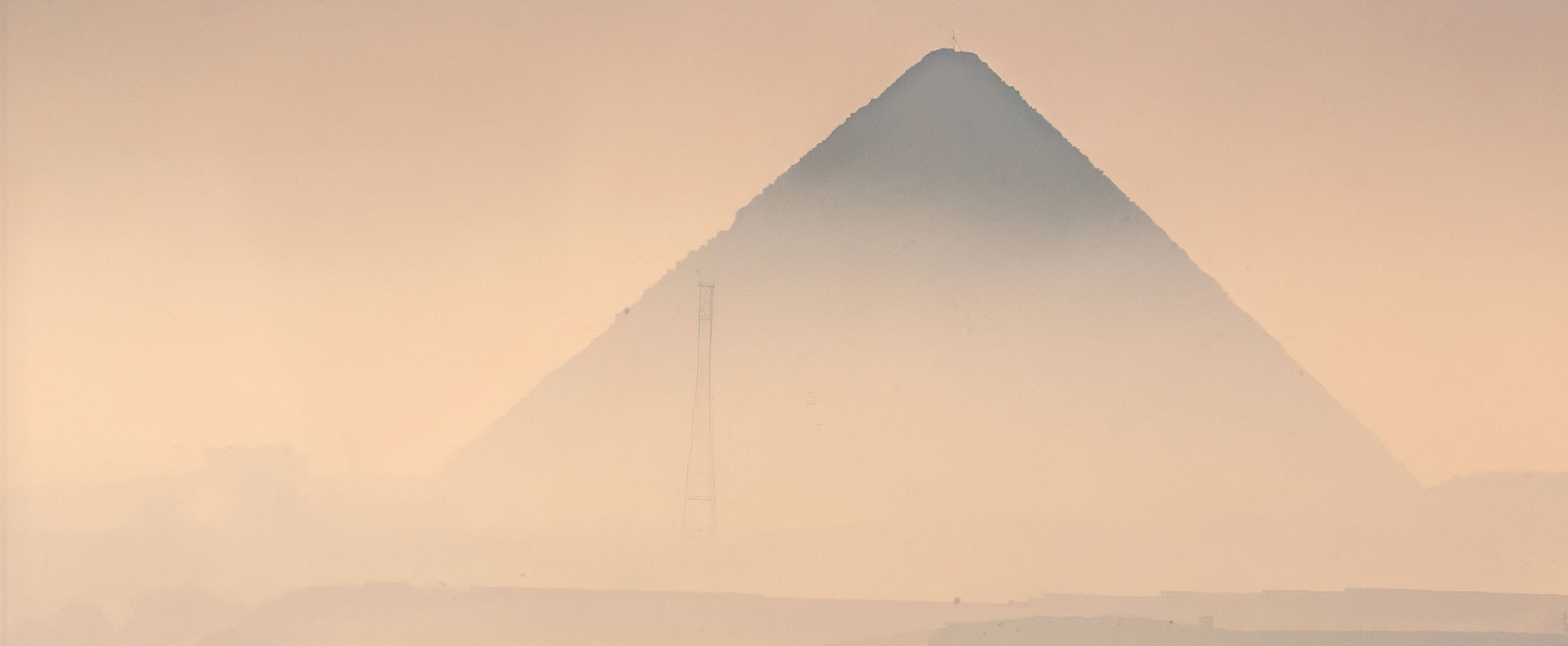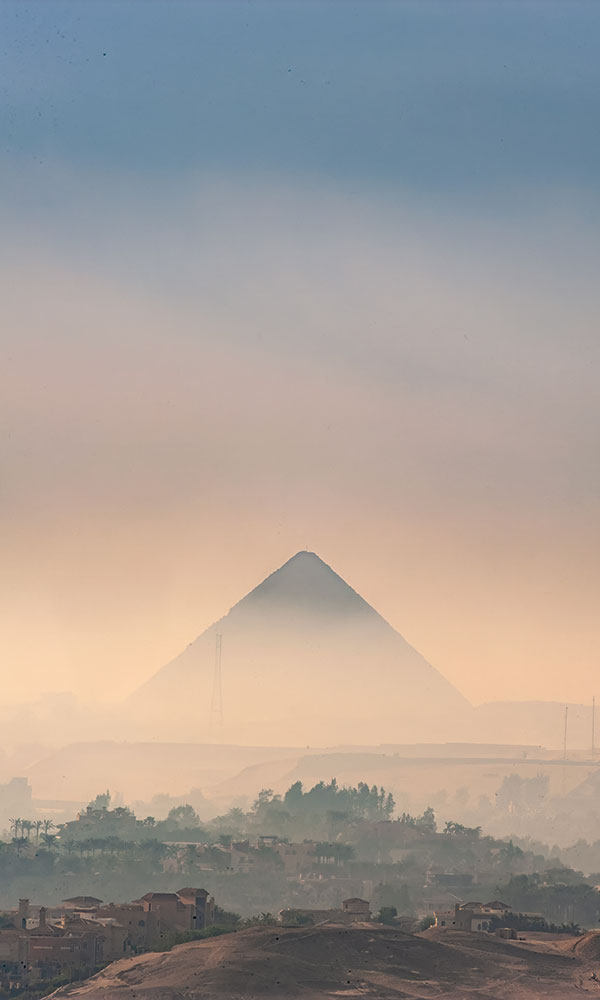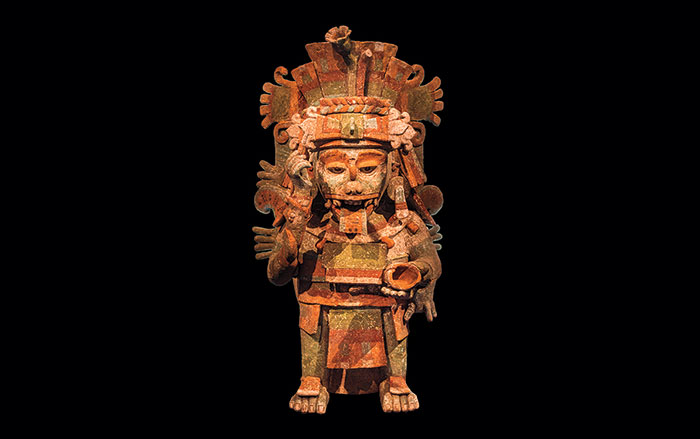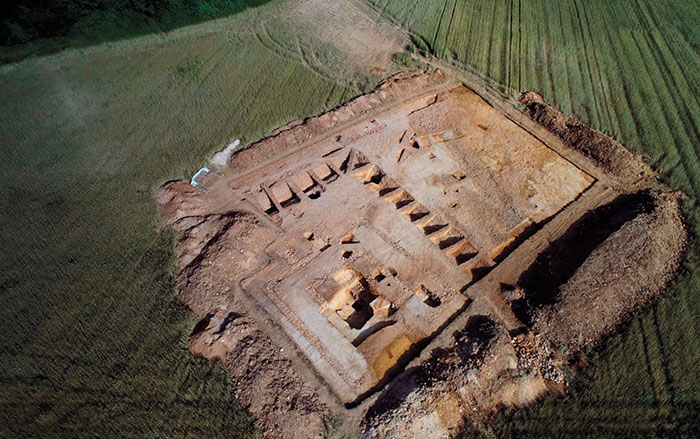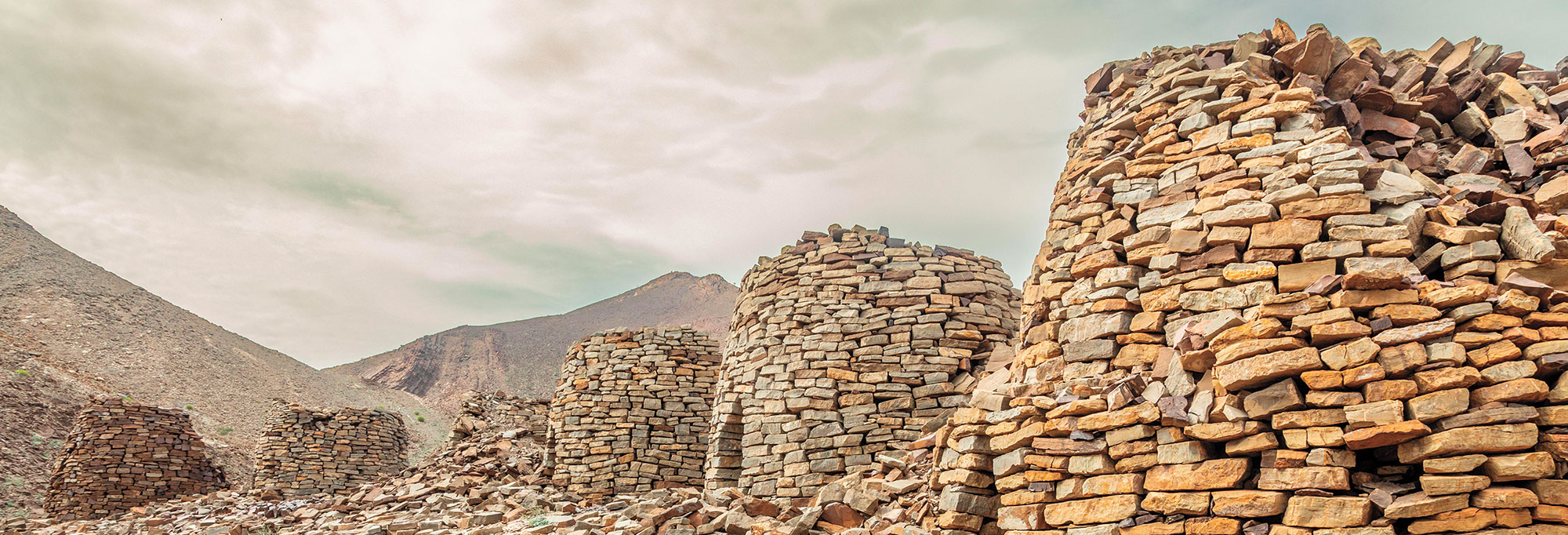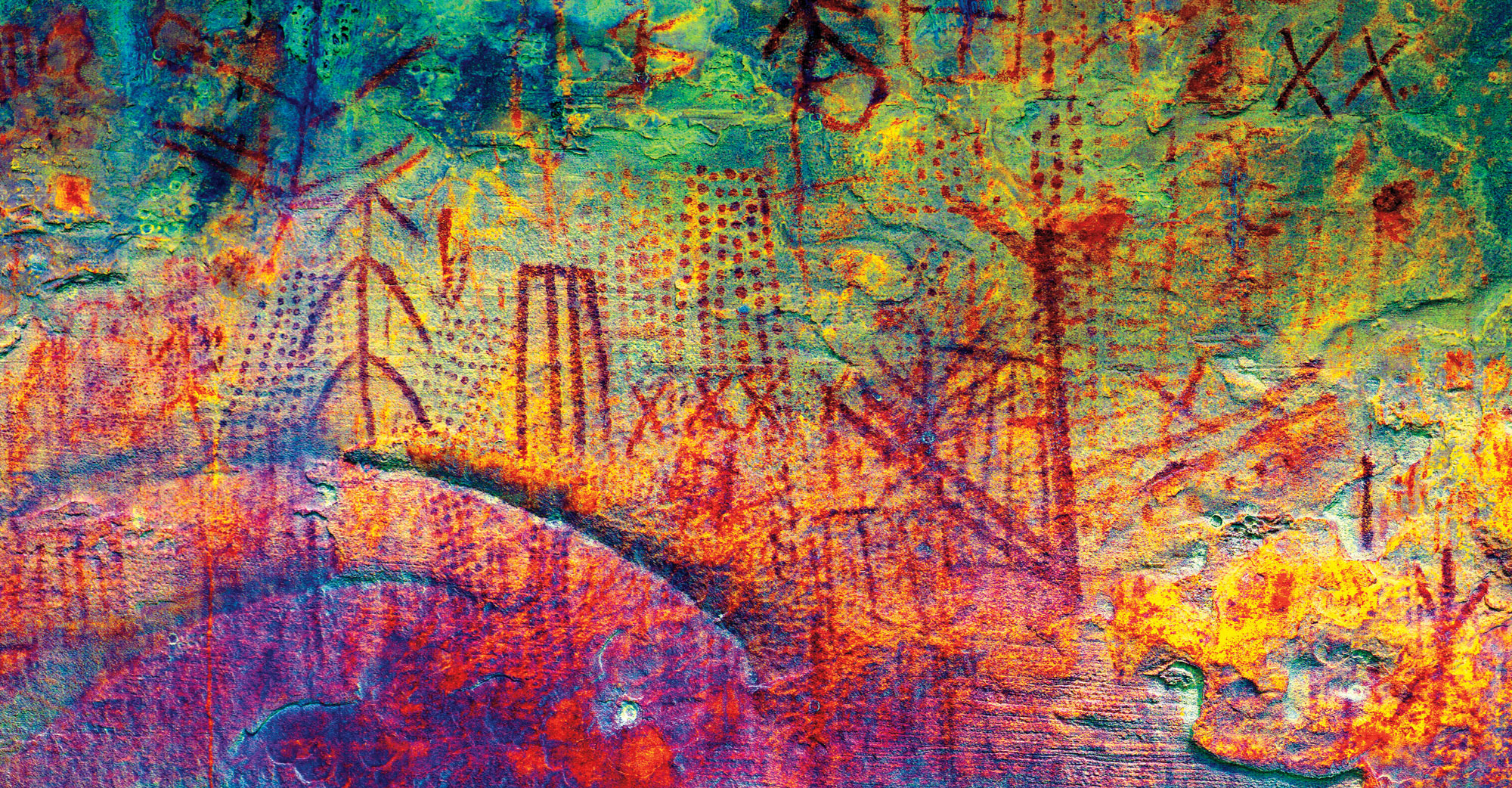
The Greek city of Rhodes emerged victorious from a yearlong siege by the Macedonian noble Demetrius Poliorcetes in 304 b.c. To commemorate their city’s resilience, the Rhodians built a towering bronze statue of the sun god Helios, their patron deity, who also appeared on their coinage. It took the local sculptor Chares 12 years to construct the Colossus of Rhodes, the tallest sculpture in the ancient world at some 120 feet. Chares created the statue using a revolutionary process known as casting in courses, which no other ancient sculptor is known to have employed. In order to cast each course, or level, of the Colossus in place, a huge earthen mound was built, enabling artisans to reach ever higher. They used metal bars to affix the bronze cladding to a stone core.
Just decades after its completion, an earthquake in 227 b.c. toppled the mighty sculpture, which broke off at the knees. Its ruins were apparently still lying on the ground into the first century a.d. By the late fourteenth century, none of the Colossus remained, but pilgrims discovered vestiges of ancient fortifications flanking the city’s harbor and mistakenly identified them as parts of the statue. This led to spurious depictions of the Colossus straddling the harbor.
With no surviving remnants or ancient representations of the Colossus, such myths have influenced debate about its appearance, location, and purpose. Archaeologist Nathan Badoud, director of the Archaeological Service of the State of Geneva, traced the sculpture’s origins through epigraphic and iconographic sources to a type of statue called a kolossos in Greek, which was made as early as the seventh century b.c. “The meaning of ‘colossus’ as an oversized statue only appeared after the destruction of the Colossus of Rhodes,” he says. “Originally, a kolossos was a magical statue, not defined by its size, that could encase a god or mortal.”

The dedicatory epigram on the statue’s base, preserved in an anthology of Greek poems, records that the Colossus “crowned” the city, leading Badoud to surmise that it had been located on a hill. He believes the most probable site is a sanctuary dedicated to Helios that is thought to have sat atop a small hill in the city center. Although a fourteenth-century fortress now covers this spot, an inscription mentioning a sacred area of Helios, dedications made by his priests, and a marble head of the god have been found there.
Following the departure of Demetrius’ troops, the Rhodians seized vast territories in Asia Minor and neighboring islands in the southeastern Aegean Sea. The Colossus would have been a fitting symbol of their victory over the Macedonians and of their conquests. “Rhodes became a true empire, and the purpose of the Colossus was to protect this empire with all its magic powers,” Badoud says. “The statue fixed Helios at the center of the new territories to ensure that they would never escape Rhodian domination.”


